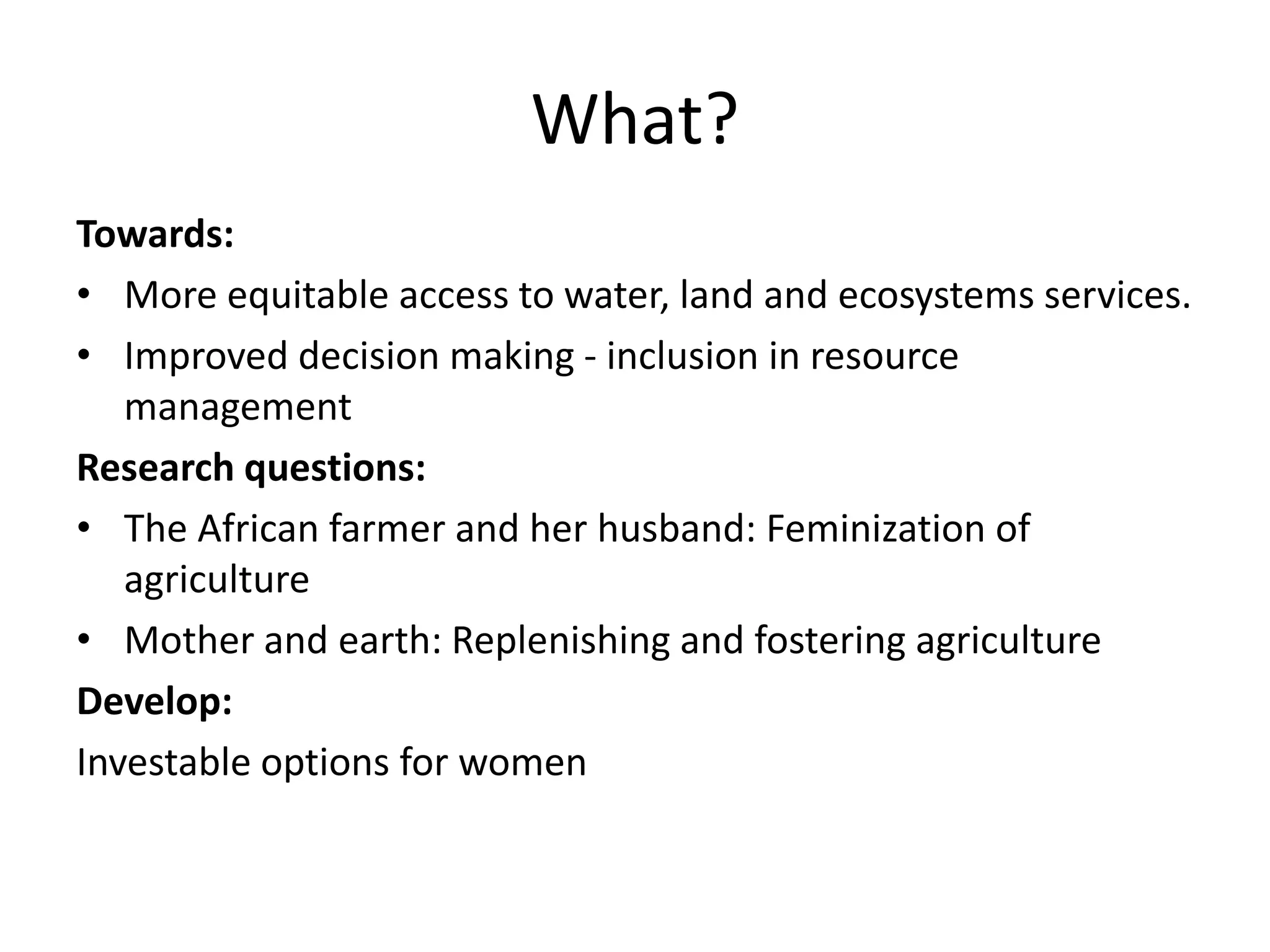The CGIAR Research Program on Water, Land and Ecosystems (WLE) aims to address global food security challenges exacerbated by climate change, demographic shifts, and economic factors. It advocates for a paradigm shift in agriculture to enhance productivity sustainably while preserving ecosystems, promoting beneficial practices such as conservation agriculture and integrated water management. The program emphasizes restoring degraded lands, enhancing smallholder farming resilience, and fostering inclusive approaches that support gender equity and community involvement.































